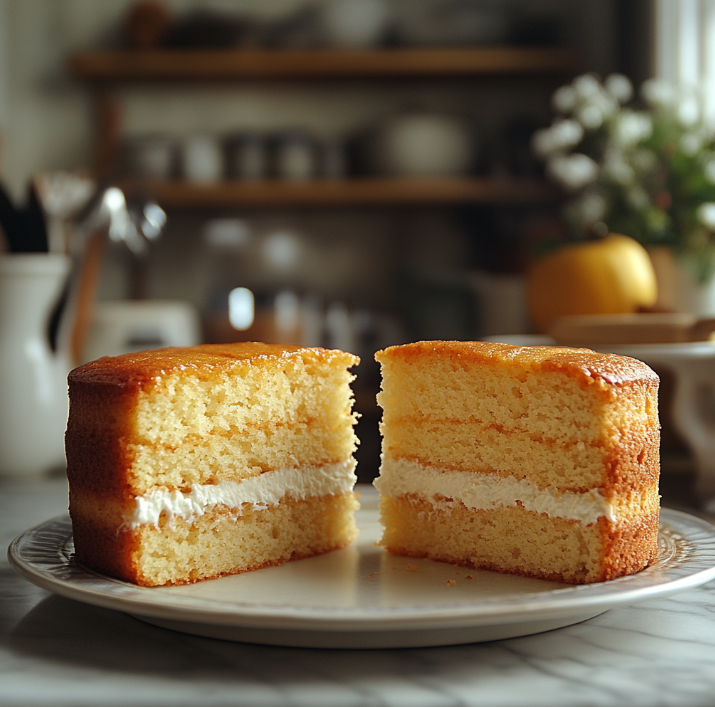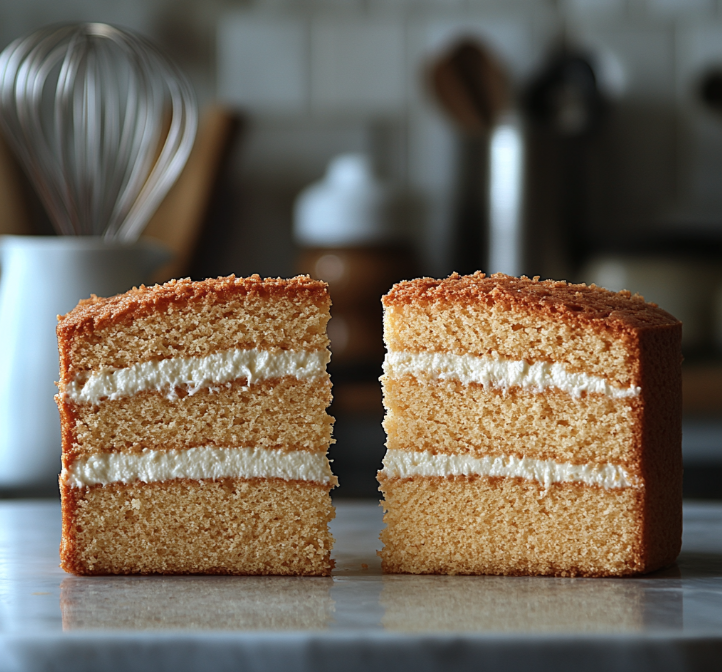Greek yogurt is a wonderful addition to cakes, bringing numerous benefits like moisture, improved texture, and enhanced flavor. Whether you’re using it to make your cakes healthier or simply want a delicious, tender crumb, Greek yogurt can elevate your baking to the next level. Let’s explore how Greek yogurt affects cake and how to use it effectively.
- Why Use Greek Yogurt in Cake Recipes?
- How Greek Yogurt Affects Cake Texture
- Greek Yogurt as a Healthier Alternative to Traditional Ingredients
- How to Substitute Greek Yogurt for Other Ingredients
- Enhancing Cake Flavor with Greek Yogurt
- Common Mistakes to Avoid When Baking with Greek Yogurt
- Greek Yogurt Frosting and Glazes
- FAQs
- Conclusion
Why Use Greek Yogurt in Cake Recipes?
Using Greek yogurt in cakes is a great way to enhance both flavor and texture. Here’s how it helps:
- Moisture: Greek yogurt locks in moisture, ensuring your cake doesn’t dry out.
- Tender Crumb: Cakes made with Greek yogurt have a soft, tender crumb that melts in your mouth.
- Tangy Flavor: Greek yogurt adds a subtle tanginess that enhances flavors, especially in chocolate and lemon cakes.
For more inspiration on baking with yogurt, check out this yogurt cake recipe that uses yogurt to create a moist and flavorful cake.

How Greek Yogurt Affects Cake Texture
Greek yogurt plays a significant role in improving the texture of cakes:
- Improved Moisture: Greek yogurt’s thickness helps keep cakes moist and tender, preventing them from becoming dry.
- Fluffy Cakes: The natural acidity in Greek yogurt interacts with baking soda or baking powder, resulting in a fluffier, more risen cake.
- Tender Crumb: The fat and protein content in Greek yogurt contributes to a tender crumb, ideal for dense cakes like pound cake or sponge cake.
To see the difference Greek yogurt can make in texture, try this lemon crinkle cookies recipe, which incorporates yogurt for a softer, more tender texture.
Greek Yogurt as a Healthier Alternative to Traditional Ingredients
One of the main reasons bakers use Greek yogurt is its ability to replace less healthy ingredients like butter or oil. Here’s how:
- Lower in Fat: Greek yogurt is lower in fat than butter or oil, making it a healthier option for cakes.
- Protein Boost: Greek yogurt adds protein to your cakes, improving both texture and nutrition.
- Fewer Calories: Substituting butter or oil with Greek yogurt helps cut down on calories while keeping your cake moist and flavorful.
For tips on how to substitute yogurt for other ingredients in baking, visit this guide on adding yogurt to cake mix, which offers insights into how to adjust recipes with yogurt.

How to Substitute Greek Yogurt for Other Ingredients
When using Greek yogurt in place of other ingredients in cake recipes, follow these substitution tips:
- Butter: Replace half the butter with Greek yogurt. For example, if a recipe calls for 1 cup of butter, use 1/2 cup butter and 1/2 cup yogurt.
- Oil: For oil, substitute half the oil with yogurt. If the recipe requires 1/2 cup of oil, use 1/4 cup oil and 1/4 cup yogurt.
- Milk or Cream: Swap out milk or cream for an equal amount of Greek yogurt to add richness and moisture to your cake.
Enhancing Cake Flavor with Greek Yogurt
In addition to improving texture, Greek yogurt also enhances the flavor of cakes:
- Tangy Flavor: The slight tanginess of Greek yogurt complements sweet flavors like lemon, chocolate, and vanilla, adding complexity to your cakes.
- Richness: Despite being lower in fat than butter, Greek yogurt still adds a rich and creamy element to cakes, making them indulgent without being overly sweet.
Common Mistakes to Avoid When Baking with Greek Yogurt
While Greek yogurt offers many benefits, there are a few mistakes to avoid:
- Overly Dense Cakes: Using too much Greek yogurt can lead to a dense cake. It’s best to replace only part of the butter or oil with yogurt.
- Batter Consistency: Greek yogurt is thick, so you may need to adjust the liquid content of your batter by adding a little water or milk to achieve the right consistency.
- Baking Time: Cakes made with Greek yogurt may bake faster due to the extra moisture. Check for doneness 5-10 minutes before the recommended time to avoid overbaking.
Greek Yogurt Frosting and Glazes
Greek yogurt also works great in frostings and glazes, adding a tangy, creamy finish to your cakes:
- Greek Yogurt Frosting: Combine Greek yogurt with powdered sugar and vanilla extract for a thick, creamy frosting that’s lighter than traditional buttercream.
- Greek Yogurt Glaze: For a simple glaze, mix Greek yogurt with lemon juice and powdered sugar for a tangy, sweet topping that pairs perfectly with pound cakes.
FAQs
- How does Greek yogurt affect cake texture?
- Greek yogurt adds moisture and creates a tender crumb, making cakes soft and delicate.
- Can I replace oil with Greek yogurt in cake?
- Yes, but it’s best to replace only half of the oil to maintain the proper structure of the cake.
- What cakes work best with Greek yogurt?
- Pound cakes, sponge cakes, and rich chocolate cakes benefit most from the moisture and texture Greek yogurt provides.
- Does Greek yogurt make cakes healthier?
- Yes, Greek yogurt is a lower-fat, higher-protein alternative to butter and oil, making cakes more nutritious without sacrificing flavor.
Conclusion
Incorporating Greek yogurt into cake recipes is a great way to improve texture, moisture, and flavor while making cakes healthier. Whether you’re looking to cut down on fat or add a tangy twist to your cakes, Greek yogurt is a versatile ingredient that can elevate your baking. For more ideas on how to bake with yogurt, explore this yogurt cake recipe and experiment with the benefits of using yogurt in your favorite cakes.

